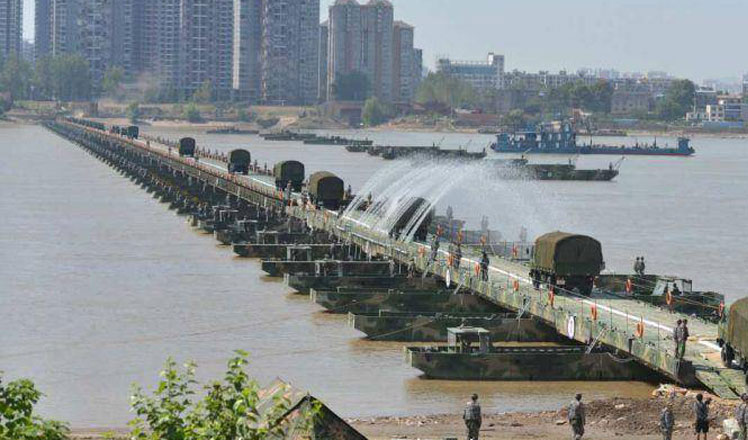Economic indicators system to launch at G20 to help evaluate growth
Updated: 2016-08-31 13:21
By Wu Zheyu(chinadaily.com.cn)
|
||||||||
While the doubt from both academia and the public has long been focused on whether there would be a quantitative assessment of the structural reform, otherwise it’s hard to evaluate the effect of reform’s processing. Lou Jiwei, the Finance Minister, used to introduce the progress already achieved in the high-level symposium on structural reform co-hosted by Ministry of Finance, IMF and OECD on February 26 in Shanghai. Namely, 9 preferential areas like fostering openness for trade and investment, labor market reform, and 48 principle guidelines for the structural reform have been formulated. The economic indicators system is going to be launched during the G20 summit. Lu emphasized that this system would play a vital role for accountability within G20 countries.
Lu and his research team have participated in various Working Group Meetings of G20 and joined the design of the economic indicators systems, as he responded to China Daily website’s inquiry about the details and specific aspects of these indicators, he said, "The indicators are divided into 12 categories in 4 areas, which include labor productivity, employment rate, government debt, economic disparity and so on."
"The G20 countries agreed to do self-assessment according to this system, then offered the results to other countries to process the peer review for every two years. Related ministries tried to design a weighting compounding variables system, while technically there are some difficulties and several countries also have dissenting voices, so finally we let each category of indicators keep an independent role."
China Daily website also confirmed with an anonymous researcher from OECD who also participated in the Working Group Meetings of G20, "There were some different opinions when we were drafting the indicators system. Both methods have its limitations."
Li Xin, the researcher from Lu's team, further explained this economic indicators system in response to China Daily website’s follow-up questions, "The indicators in four areas include result-oriented indicators, like Gini coefficient, and also government oriented, like applying the indicators to assess government works’ effect. The reference data comes from the public statistical data of G20 countries, like from the National Bureau of Statistics (NBS). The scope of application would be world-wide, while the ones who are responsible for evaluating according to it are within G20 countries. OECD and IMF would be charge of assessment and supervising this system."
"The previous way to assess how a country achieved its objective of economic growth, is to observe how many strategies they offered to foster economic growth. While from the 2010 G-20 Seoul summit, a total of over 1000 strategies have been raised by the G20 countries, in fact the effects of implementing them are very diverse."
"This system is designed for countries to assess by themselves, giving the different development stages they are faced with. The 12 categories of economic indicators are fixed, while the individual indicators could be chosen by themselves. Like for economic disparity, you could either use Gini index or Theil index."
"I think the most reasonable part of this system is that it offers a consistent criteria for each country to clearly recognize its own development trend,"Li summarized when China Daily website asked for her personal evaluation of the system.
- Brazil leader's impeachment trial enters final stretch
- 94th anniv. of Victory Day marked in Turkey
- Merkel opens Germany's 17th Confucius Institute
- France's outgoing minister vows to 'transform' France
- One dead, three wounded in blast at Chinese embassy in Kyrgyzstan
- Tainted food sickens 37 Buddhist monks, 2 helpers in Cambodia

 Top 10 wealthiest countries in the world
Top 10 wealthiest countries in the world
 Princlings go to school
Princlings go to school
 Chinese painters capture beauty of Hangzhou
Chinese painters capture beauty of Hangzhou
 1,150-meter-long 'floating bridge' created
1,150-meter-long 'floating bridge' created
 Take a sip of wine at the glass skywalk in Hunan
Take a sip of wine at the glass skywalk in Hunan
 Groom and bride cycle their way to wedding
Groom and bride cycle their way to wedding
 The world in photos: Aug 22- Aug 28
The world in photos: Aug 22- Aug 28
 Daily life in Hangzhou, host city of 11th G20 summit
Daily life in Hangzhou, host city of 11th G20 summit
Most Viewed
Editor's Picks

|

|

|

|

|

|
Today's Top News
Trump outlines anti-terror plan, proposing extreme vetting for immigrants
Phelps puts spotlight on cupping
US launches airstrikes against IS targets in Libya's Sirte
Ministry slams US-Korean THAAD deployment
Two police officers shot at protest in Dallas
Abe's blame game reveals his policies failing to get results
Ending wildlife trafficking must be policy priority in Asia
Effects of supply-side reform take time to be seen
US Weekly

|

|







